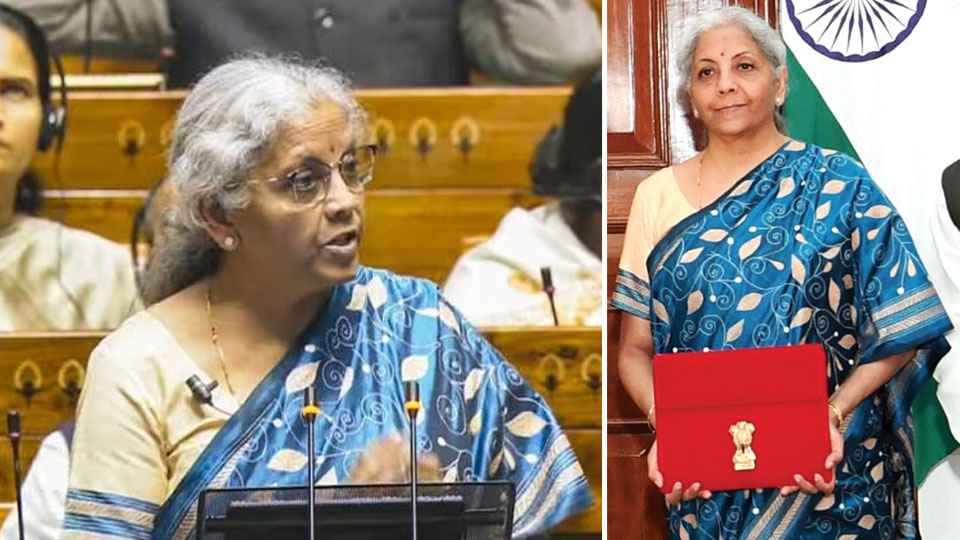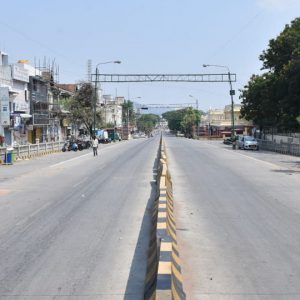Tax benefits for startups, investments made by sovereign wealth, pension funds to be extended to March 2025
New Delhi: Union Finance Minister Nirmala Sitharaman presented the Interim Union Budget — the one for the forthcoming financial year (2024-25). Since it is the last one before Lok Sabha elections, the Budget is an interim one. No changes were introduced to tax slabs. There is no tax liability for income of Rs. 7 lakh as announced in 2023-2024 Budget.
This is Nirmala Sitharaman’s sixth Union Budget and she wrapped up her speech in 60 minutes. She wore a blue-cream Tussar saree on Budget day.
In her shortest speech so far, Nirmala Sitharaman said, “As for tax proposals, in keeping with the convention, I do not propose to make any changes relating to taxation and propose to retain the same tax rates for direct taxes and indirect taxes including import duties.”
Meanwhile, the fiscal deficit target — gap between Government’s revenue and expenses — for 2024-25 (FY25) was set at 5.1 percent of gross domestic product (GDP). Target is to reduce fiscal deficit to below 4.5% of the GDP in 2025-26 (FY26).
The interim budget — a short-term financial plan — seeks Parliament nod for a grant in advance to meet the Government’s essential expenditure for the first four months of the new financial year. The next ‘full budget’ will be presented in July, once a new Government has been sworn in after the Lok Sabha elections.
Direct tax collection trebled
The number of tax filers swelled by 2.4 times, Nirmala Sitharaman said. The direct tax collection has trebled since 2014. In 2024-25, the tax receipts are projected at Rs. 26.02 lakh crore. The Finance Minister has announced 2 crore more houses under the Pradhan Mantri Awas Yojana – Gramin (PMAY-G).
“For our tech-savvy youth, this will be a golden era. A corpus of Rs. One lakh crore will be established with 50-year interest free loan provided. The corpus will provide long-term financing and refinancing with long tenures at low or nil interest rates. This will encourage the private sector to scale up research and innovation significantly in sunrise domains,” she said.
“We need to have programmes that combine the powers of our youth and technology. A new scheme will be launched for strengthening deep tech technology for defence purposes and expediting atma nirbharta,” the Finance Minister added.
Health cover for ASHA workers
Nirmala Sitharaman also said that the health cover under the Ayushman Bharat Pradhan Mantri Jan Arogya Yojana will be extended to all Accredited Social Health Activist (ASHA) Workers and Anganwadi workers and helpers as well.
She also announced plans to set up more medical colleges through utilisation of the existing hospital infrastructure under various departments. A committee for this purpose will be set up to examine the issues and make relevant recommendations, she said.
Triple talaq illegal
“Making triple talaq illegal, reservation of 1/3rd seats for women in Lok Sabha and State assemblies and giving over 70 percent houses under the PM Awas Yojana in rural areas to women have enhanced their dignity,” said the Finance Minister.
“Through roof-top solarisation, one crore households will be enabled to obtain up to 300 units of free electricity every month. This scheme follows the resolve of the Prime Minister on the historic day of the consecration of Shri Ram Mandir in Ayodhya.” The Government aims to achieve ‘net zero’ by 2070.
‘Viksit Bharat’ by 2047
For boost to tourism, “long-term interest free loans to be provided to States to encourage development.” Nirmala Sitharaman noted that the Indian economy has witnessed positive transformation in the last 10 years.
“The Government is working towards making India ‘Viksit Bharat’ by 2047…Our focus is sabka sath, sabka vikas,” the Finance Minister said and added “The Government is equally focused on GDP – Governance, Development and Performance.”
In a review report ahead of Budget, the Finance Ministry projected that the Indian economy is likely to grow at over 7 percent and is expected to become the third-largest economy in the world in the next three years, with a GDP of 5 trillion dollars.








Recent Comments